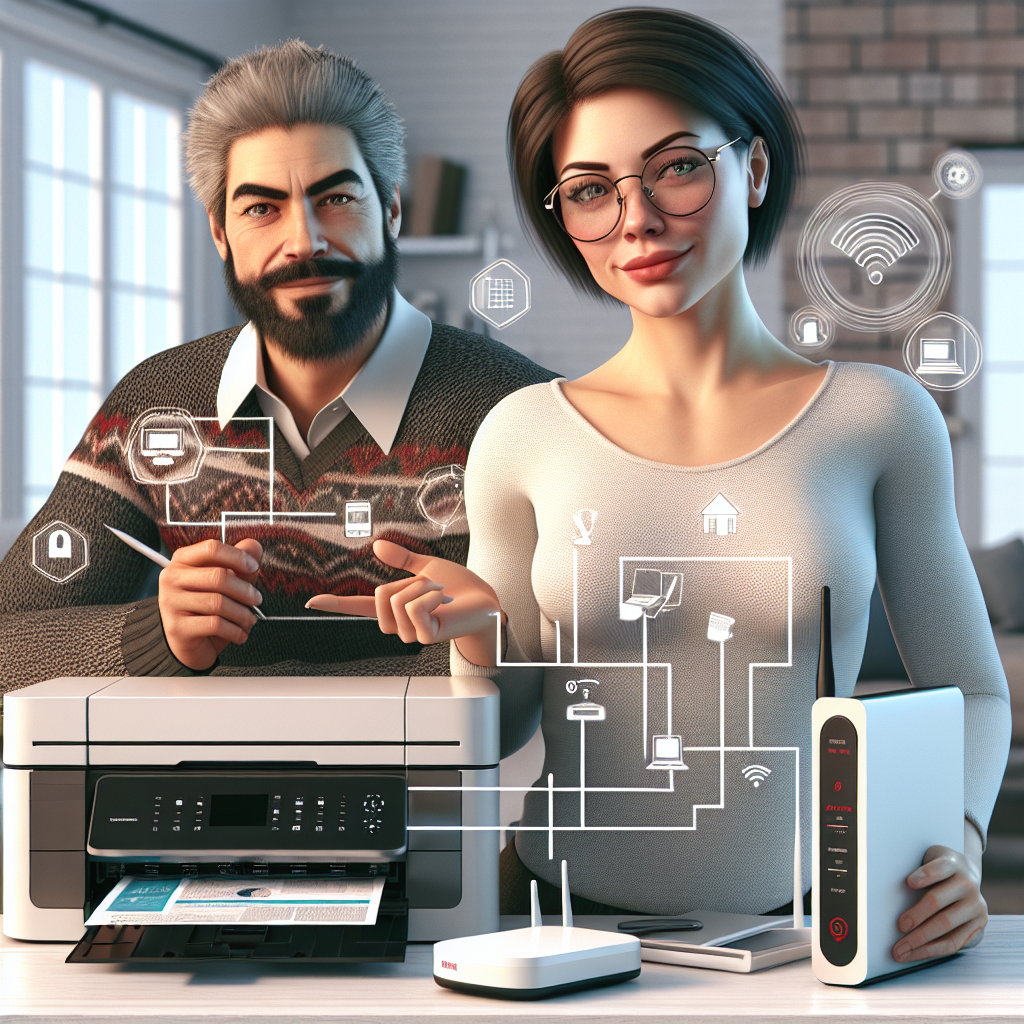Connecting a printer to a network enables you to print from multiple devices without the need for a direct connection. This can be particularly useful in both home and office environments. This guide will provide you with the steps to connect your printer to a network, catering to both wired and wireless setups.
Wired Network Printer Setup
Setting up a printer on a wired network usually offers more stable and faster connections. Here’s how you can do it:
Step-by-Step Guide for Wired Network Setup
- Place Your Printer: Position your printer close enough to your router or switch to connect easily with an Ethernet cable.
- Connect Ethernet Cable: Plug one end of the Ethernet cable into the printer and the other end into your router or switch.
- Install Printer Drivers: Ensure you have the latest drivers for your printer model. You can usually download these from the manufacturer’s website.
- Network Settings: Check your printer’s manual for specific instructions on configuring the network settings. This may involve setting a static IP or allowing DHCP.
- Test the Connection: Print a test page to ensure your printer is correctly connected to the network.
Wireless Network Printer Setup
Wireless connections offer flexibility in placing your printer, making it accessible to all devices within the Wi-Fi range. Follow these steps for a wireless setup:
Step-by-Step Guide for Wireless Network Setup
- Turn on Your Printer: Ensure the printer is powered on and Wi-Fi enabled.
- Access Printer’s Control Panel: Use the printer’s interface to navigate to the wireless settings.
- Select Wi-Fi Network: Select your Wi-Fi network (SSID) and enter the password.
- Install Printer Drivers: Download and install the latest drivers for your specific printer model from the manufacturer’s website.
- Connect to Network: Follow the on-screen prompts to complete the connection.
- Print Test Page: Print a test page to ensure successful connectivity.
Connecting Printer on Different Operating Systems
Whether you’re using Windows, macOS, or a mobile operating system, the general steps to connect to a network printer remain similar but may have some OS-specific nuances.
Connecting on Windows
- Open Settings: Navigate to Settings > Devices > Printers & scanners.
- Add Printer: Click on Add a printer or scanner and wait for Windows to detect your printer.
- Install Driver: If the drivers are not automatically installed, download them from the manufacturer’s website and install them manually.
- Confirm Connection: Once the printer is added, print a test page.
Connecting on macOS
- Open System Preferences: Go to System Preferences > Printers & Scanners.
- Add Printer: Click on the “+” icon to add a new printer.
- Select Printer: Choose your printer from the available options.
- Install Driver: Install any required printer drivers if prompted.
- Test Print: Print a test page to verify the connection.
Connecting on Mobile Devices
Mobile devices running iOS or Android can also connect to network printers.
- For iOS Devices:
- Ensure the printer supports AirPrint.
- Go to the app you want to print from (e.g., Safari, Photos).
- Tap the share icon and select Print.
- Select your printer from the list of available printers.
- For Android Devices:
- Ensure the printer is compatible with Google Cloud Print or a similar service.
- Open the app you want to print from.
- Tap the Menu icon and select Print.
- Choose your printer from the available list.
Troubleshooting Common Issues
Despite the comprehensive steps, you might still face some common issues during the setup:
Printer Not Found
- Ensure Network Availability: Make sure your network is functioning properly, and both your printer and device are connected to the same network.
- Check Firewall Settings: Sometimes, firewall settings can block printer connections. Ensure printer-related ports are open.
- Restart Devices: Restarting your router, printer, and computer can resolve connectivity issues.
Printer Offline
- Check Printer Status: Make sure the printer is turned on and properly connected to the network.
- Update Drivers: Download and install the latest drivers for your printer model.
- Reset Printer Settings: Sometimes resetting the printer to its default network settings can resolve the problem.
Conclusion
Connecting a printer to your network can significantly streamline your printing tasks, offering convenience and flexibility. By following the steps outlined in this guide and troubleshooting any issues, you can ensure that your printer is readily accessible from any device on your network.

